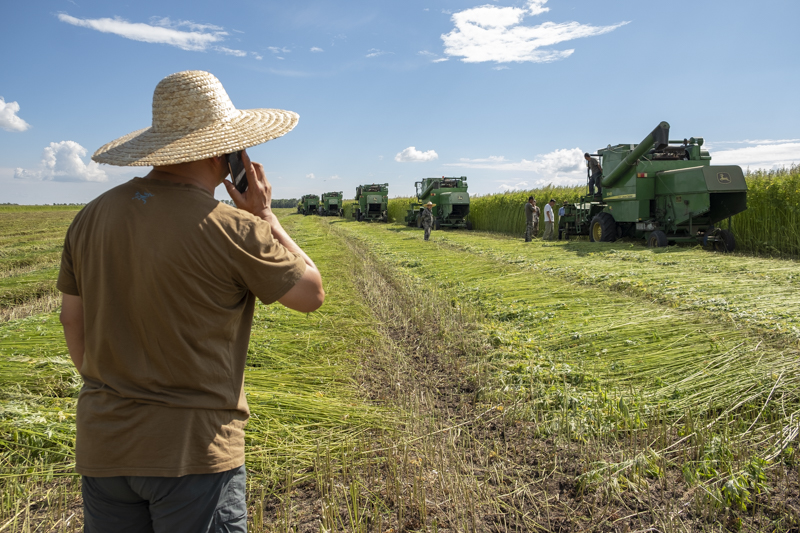Discover hemp’s tremendous potential to transform societies and industries — with unmatched, sustainable solutions for food, medicine, building materials and textiles — fighting and mitigating climate change.
Hemp has been the world’s most forbidden plant, due to containing Tetrahydrocannabinol (THC), a psychoactive substance, mostly known as Marijuana. During 70 years of prohibition most knowledge about the cultivation and processing of hemp was been lost, yet it is being rediscovered by big industries around the globe. The clothing industry, for example, uses the fibers for its outstanding durability and antiseptic qualities. Yields from hemp are four times higher than from cotton and grows with less water and without herbicides or pesticides. Architects have discovered hemp as a new building material, providing excellent insulation values and carbon negative effects. As well, the food industry is using hemp as a replacement for animal derived proteins and omegas from fish, since it contains all fatty acids in a perfect combination fitted for human consumption.
The global event of a climate crisis is forcing humanity to reassess industrial practices, land use and exuberant carbon emissions triggered by the desire of endless growth. Hemp is being rediscovered worldwide to counteract causes and impacts of climate change and to mitigate the effects.
With photography and interviews, I have documented 184 projects in 26 countries worldwide during the past 3.5 years. Among other things, I’ve learned how different climate-zones and geographical regions determine what kind of hemp can be grown and consequently the purpose of its use in places around the world. I’ve gathered many, many truly remarkable stories from all around the world.
Maren Krings

















